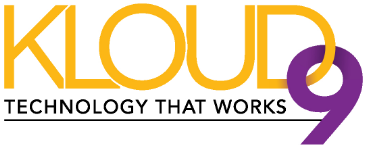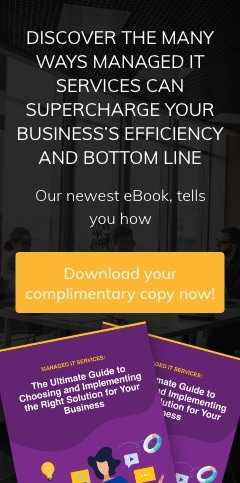Many of our KloudTel Hosted VoIP Customers have been reaching out to express frustration over carriers marking their business numbers as SPAM. Enough customers have done this, we decided to write a blog post about why this is happening.
The New Law
The main reason carriers are cracking down on spam calls is due to a law passed under the Trump administration that requires carriers to provide enhanced protections for their customers at no charge.
The new law builds on steps taken by the country’s communications regulator, the Federal Communications Commission, as well as state attorneys general and industry groups.
The FCC has clarified that phone companies can block unwanted calls without first asking customers, paving the way to broaden the rollout of call-blocking services. The law says phone companies cannot charge for these services.
Another important step is getting rid of “spoofed” numbers, or when a scammer fakes Caller ID to look like it’s coming from the same area code or an important government agency like the IRS. The industry is developing a system to tell people when the Caller ID number is real called STIR/SHAKEN.
The new law requires all phone companies to put this system in place, which will mean phone companies have to try to stop these calls before they reach the consumer. This technology doesn’t work for home phones connected to an old-school copper landline; the law calls on the FCC and phone companies to come up with an alternative for those customers.
The FCC also gets more time to fine robocallers and do so without warning them first. The bill also calls for tougher fines when individuals intentionally violate the law and pushes the agency to work with the Justice Department to go after criminals. Over the long term, that could act as a deterrent.
Blocked calls can make it impossible for your business to reach customers about important information. If your call center has a low answer rate, you might have fallen victim to “spam” or “scam” flags and similar problems. Understanding how business calls get blocked or flagged as spam is the first step to solving the problem.
Customers Report Your Number as a Spam Risk
Most blocked calls happen because consumers report your number as a spam risk. Call-blocking apps make it easy for people to report any number as “spam risk” or “scam likely”. If enough people report your number, the app will display a warning to consumers receiving calls from that number. Eventually, the app may block all calls from the number.
More often than not, consumers report the numbers of legitimate businesses because they feel annoyed. Perhaps you interrupted them at a bad time or your call center dialed them too late or early in the day. Some people will even report numbers simply because they don’t recognize them. If they don’t know the number, they assume it’s a scam.
Carriers Flag Your Number for Frequent Dialing
If your call agents use the same number too often, carriers may flag them for suspicious behavior. The carrier’s analytics software can’t tell the difference between legitimate calls and robocalling. In an effort to protect its customers, the carrier will flag suspiciously active numbers, or numbers that are dialing too heavily.
In general, you shouldn’t use a number more than 100 times per day. Carriers will notice and take action. When a number dials to heavy it is viewed as a “non human” call and can receive flags automatically on a carrier or network.
Caller ID Marks Your Number as Spam
Caller ID can work in your business’s favor. It can also undermine your attempts to reach consumers. When caller ID displays your outgoing number with a spam or scam warning, people usually refuse to answer. You can’t really blame them. The number of spam calls has been growing for years. No one should put themselves at risk from phishing attempts. It makes sense to ignore the call and avoid the danger.
Unfortunately, caller ID doesn’t always have accurate information about numbers. It may flag your calls even though you operate a legitimate business that wants to help customers. If your caller ID shows “scam” or “spam”, you will experience lower answer rates and are more likely to get your calls blocked by consumers.
Carrier Routing Issues and Attestation Ratings
STIR/SHAKEN could end the nightmare of spam calls. It will take some time for every service provider to reach the level needed to implement universal call authorization, though. In the meantime, some of the largest carriers have rolled out pieces of the system.
Everyone in the call center industry looks forward to STIR/SHAKEN call authentication because it will virtually eliminate call spoofing, which will make it easier for call agents to reach their customers. The end of call spoofing will likely mean that call centers can reach more people, improve customer services, and increase sales. The only people afraid of the technology are the ones who want to trick consumers.
Call attestation will play a critical role in STIR/SHAKEN. Some companies have already started using call attestation. That’s terrific news for most call centers that have seen their operations interrupted by call spoofing.
Call routing issues, however, can upset call attestation attempts. Problems most often emerge when call centers choose “least call routing”, which makes it cheaper for them to place thousands of calls per day. With least call routing, your outgoing calls can get routed through multiple networks as they travel from your call center to the intended customer. Involving unknown networks can confuse authentication protocols, which leads to a lower call attestation rating.
You can probably guess what happens when your number receives a low call attestation rating. You either get flagged or blocked calls that make it harder to connect with customers.
Call centers can save a lot of money by using least call routing. Taking the cheaper option, however, can make it impossible to reach consumers.
Know How to Protect Your Numbers and Stop Getting Calls Blocked
You don’t have total control over whether your calls get flagged or blocked, but you can use several strategies that make it easier for you to reach consumers. Some of the most successful options include:
- Use Caller ID Reputation to scan numbers for flags as soon as you buy them–if a previous owner misused them, they might still get blocked.
- Register your numbers with CNAM and carriers so they know the numbers belong to a legitimate business.
- Monitor your numbers daily to detect flags early.
- Swap outbound numbers often during the day to prevent overuse.
- Follow ethical guidelines that won’t anger consumers and encourage them to flag your numbers.
- Configure your dialing software to make sure it’s configured properly.
Dispute Flagged Numbers With Carriers
Major telecom carriers give you easy ways to dispute flags and blogs. You can contact AT&T via Hiya. Send feedback online to Verizon. Report a problem to T-Mobile.
If you want to save time, you can potentially update numbers that lead to blocked calls by signing up with Free Caller Registry. The free portal will send information to major carriers so they can update their databases and, hopefully, remove flags from your business numbers.
When a number’s reputation scan shows you have a flag, reach out to carriers to correct the problem. You don’t want to spend money on numbers you can’t use.
Follow Ethical Dialing Practices
The Federal Trade Commission (FTC) has several rules that telemarketers must follow. For example, you can only call consumers between 8 a.m. and 9 p.m. Also, telemarketers must promptly identify themselves, the organizations they represent, and why they’re calling. These rules make a lot of sense because they help protect consumers and businesses.
Going further than the FTC’s requirements will help you avoid blocked calls. Some ethical dialing practices that your call center should follow include:
- Using legitimate lead lists with numbers of people who want to hear from you.
- Adopting enhanced caller ID that displays your business’s name and phone number.
- Training new agents to follow scripts that keep customers informed and build better relations between your company and your leads.
Of course, you also need to follow the FTC’s rules. Breaking them does more than damage your reputation and lead to more blocked calls. With enough violations, you can face expensive fines that make it harder for your company to earn profits.



